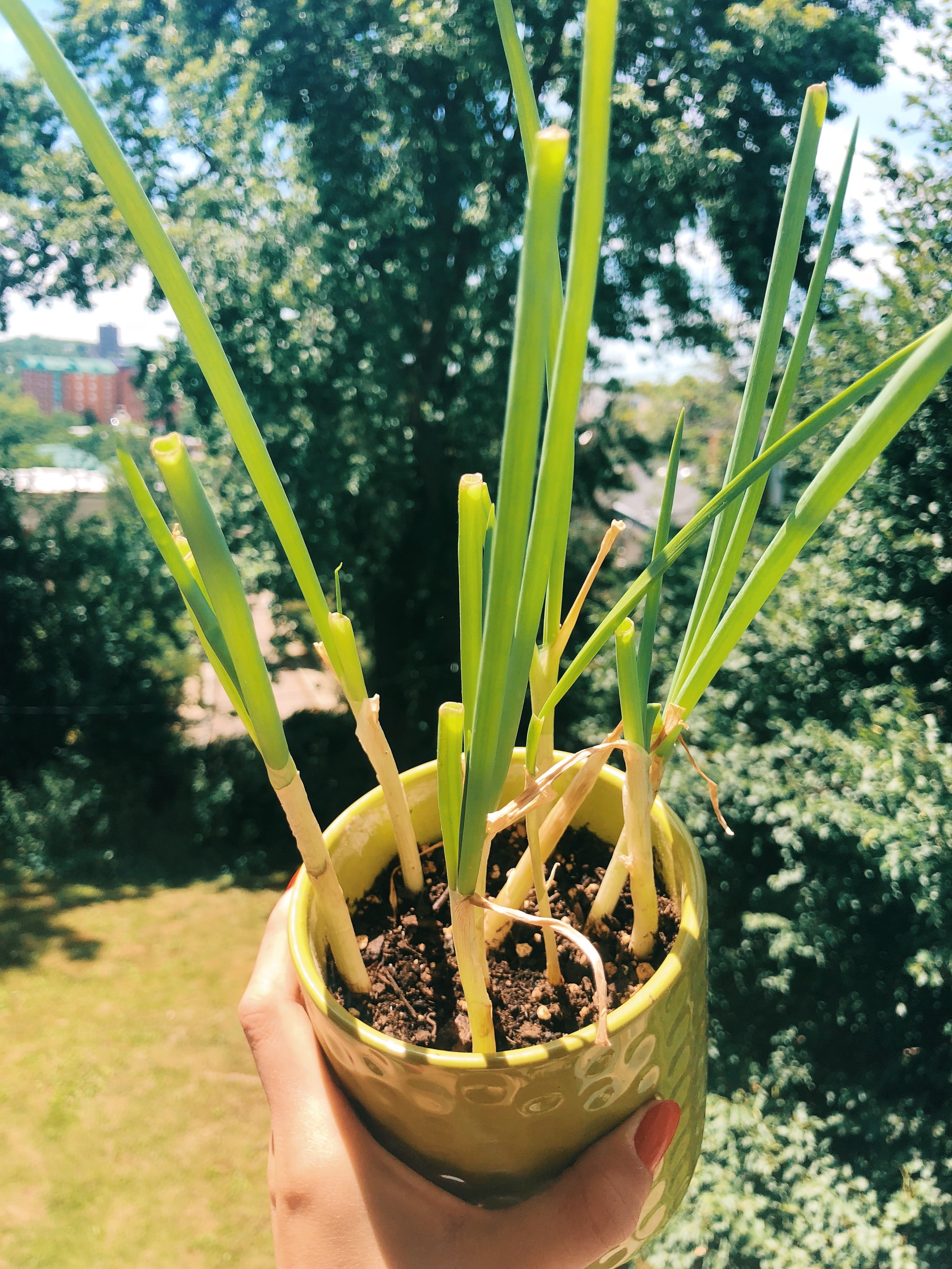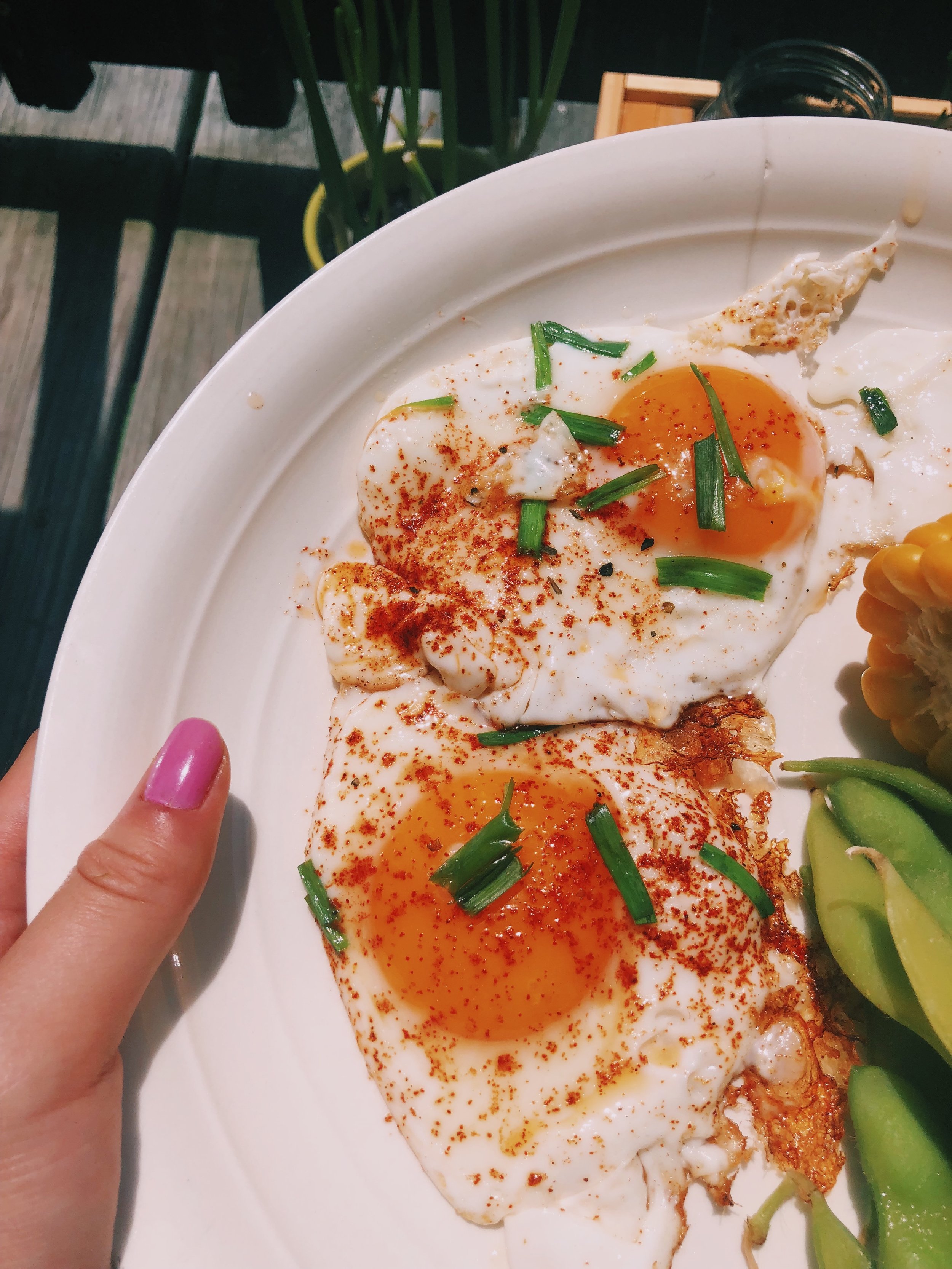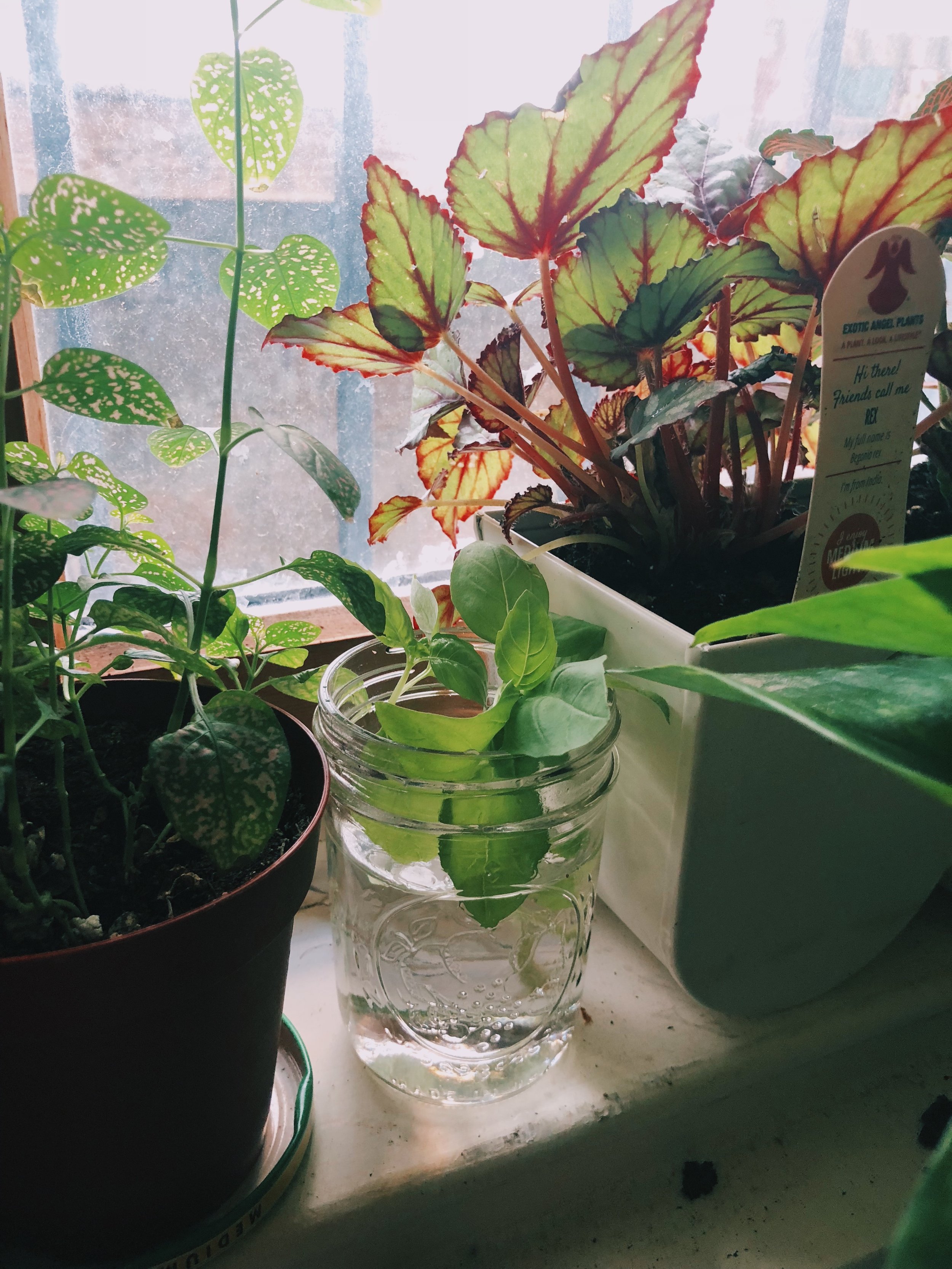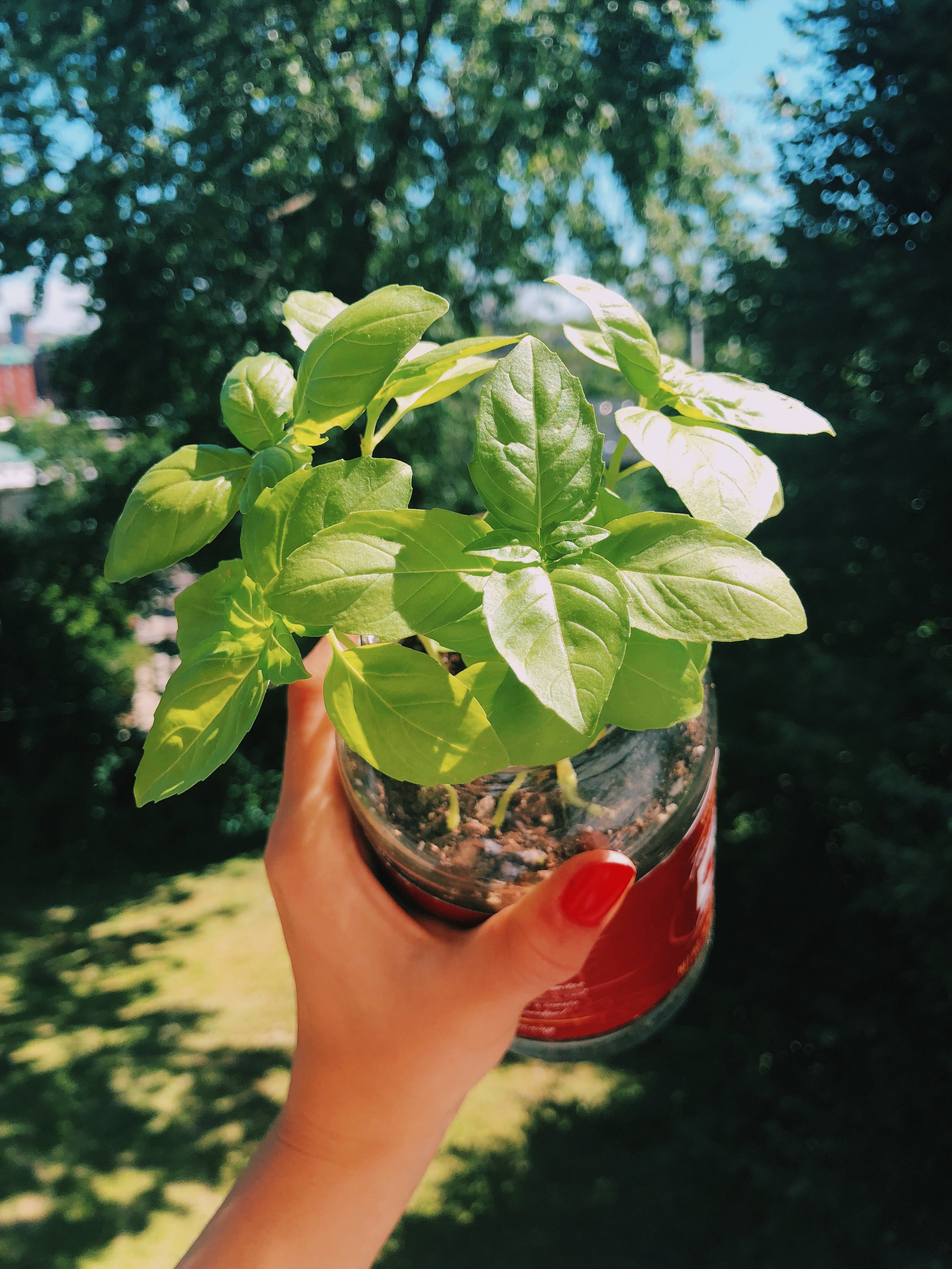Buy Once, Grow Forever
Do you find yourself buying tiny bunches of herbs constantly at the grocery market, but never end up using it all? Consider growing it yourself without having to start from seed! I'm sure we've all heard of hacks like this for things like avocados and lemons, but it's just not practical in a non-tropical, fluctuating climate, also known as New England. But fear not! These are my tried and true plants that are super easy to grow for city dwellers as they are pretty consistent in growth, whether it be indoors or outside during the summertime.
Growing From Bulb
The first time I discovered this was simply because I noticed a green root coming out from a clove of garlic. If you want to know what I mean, check any garlic cloves you've had sitting around because chances are, there are some beginnings of green growth either inside or jutting out of the garlic! That's because the garlic is really just the bulb of the plant. To get started, all you need is a jar (I use old tomato sauce jars or bottoms of juice bottles), some dirt, and stick as many bulbs as you want in the dirt with the pointy side facing upward. This is especially handy for when you have old garlic lying around, or more garlic cloves than you need. Garlic greens impart a garlicky flavor to anything you cook it on, and it's my favorite way to enhance a fried egg, omelets, chicken, and pasta dishes. And since garlic is very much essential to me as a flavor, this little addition is the perfect way to elevate and add a color component to my dishes. If you're lucky, you may even end up with some garlic scapes! In addition, this trick is perfect for scallions (good for scallion pancakes) and chives (also great for garnishing). All you have to do is make sure you leave a small amount of green stalk from the white bulb after you cut the ends, and stick the bulb into the dirt. The growth is practically instantaneous and requires very little maintenance or effort.
Propagation
In high school, my independent research project in AP Biology was the propagation of succulents. Though I was not very successful then, I just want to veer a little off topic to show you guys that this concept is applicable to those sun-loving suckers. If you've ever had a leaf fall off of a succulent, just place it in dirt and chances are, it'll grow into another plant. We're just taking advantage of mother's natures own vegetative reproductive mechanisms.
Okay, but back to the food! This herb hack is applicable to a whole slew of herbs, and you will 1) have a lovely smelling kitchen 2) never be ripped off by the grocery store again 3) be able to season all your foods with fresh, homegrown herbs all the time! Impress all your friends and your mom with your brand new green thumb through just a few starter herbs (or seeds), some jars, dirt, and patience!
So I like to grow basil from seed, but this also works if you take any other herb (such as mint, rosemary, sage, oregano, thyme, lavender). If you choose to grow from seed, this is an excellent way to thin the bunches of plants so that they are not overcrowded without losing out on yield. I find soft-stemmed plants (such as basil) to be the easiest, but if you're using woodier stems, like rosemary, I would recommend using the softer stemmed top sections since it's full of new growth hormones. That being said, propagation (or as I affectionately called it in my AP Bio project, decapitation propagation) is most effective during spring and summertime, with natural growth cycles in mind. Since this is the time for new growth, the plant will have plenty of hormones within, and be able to effectively produce new roots from your cutting.
No matter what herb you are cutting, make a clean cut (do not crush the stem or introduce disease!) and remove leaves at the bottom if necessary so that you can stick the cutting in water. Make sure that no leaves are hanging out in the water and be sure to keep the plant in a well-lit area, but not in direct sunlight. After a few weeks, roots will sprout and once there is a substantial amount, you can stick them into soil. I saw my basil cuttings' first roots in less than a week because this is prime growing season for them. With very little commitment and space, you can have a full out herb garden for your kitchen, windowsill, or porch that is pleasing to both your dinner plate and home decor!







